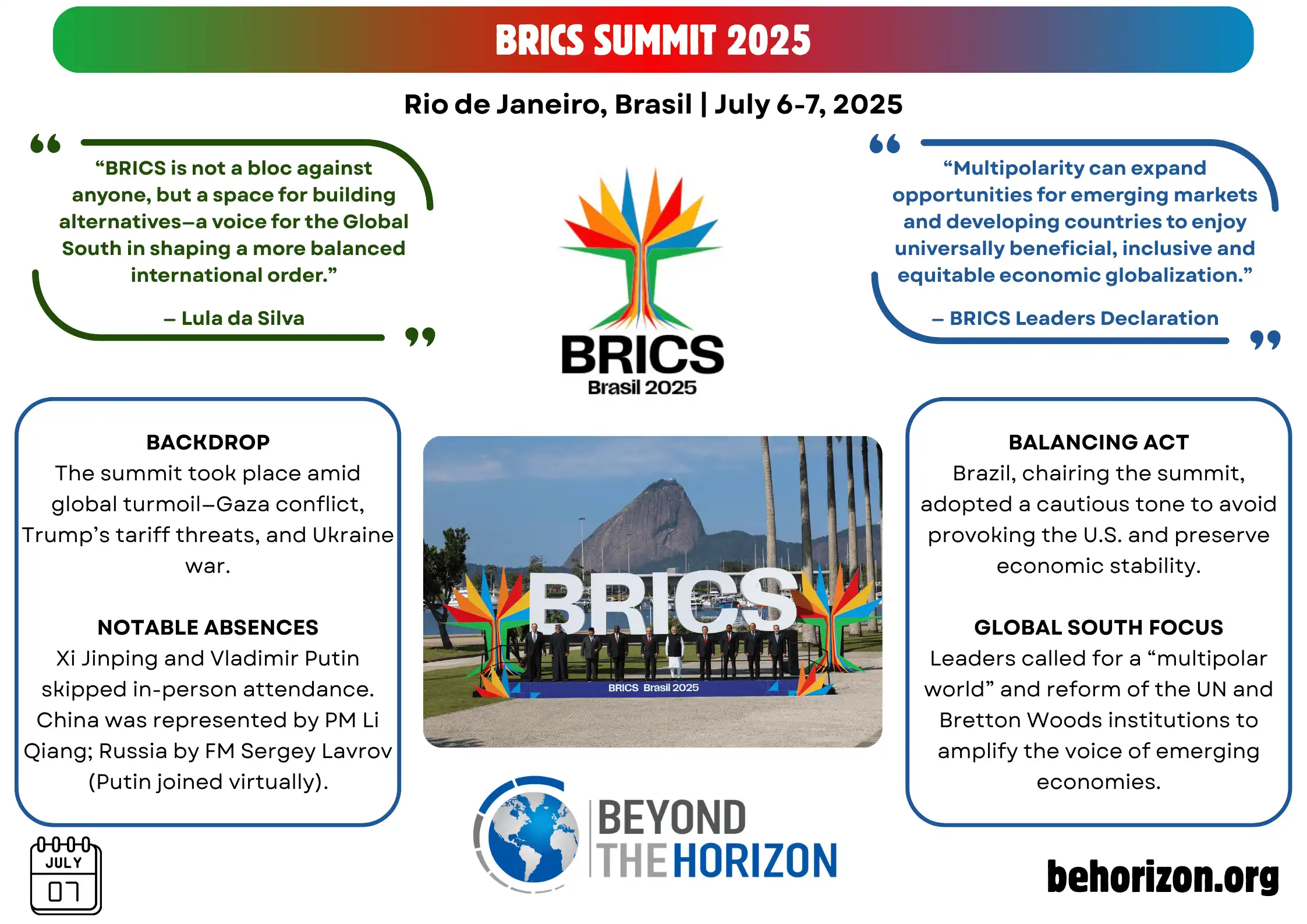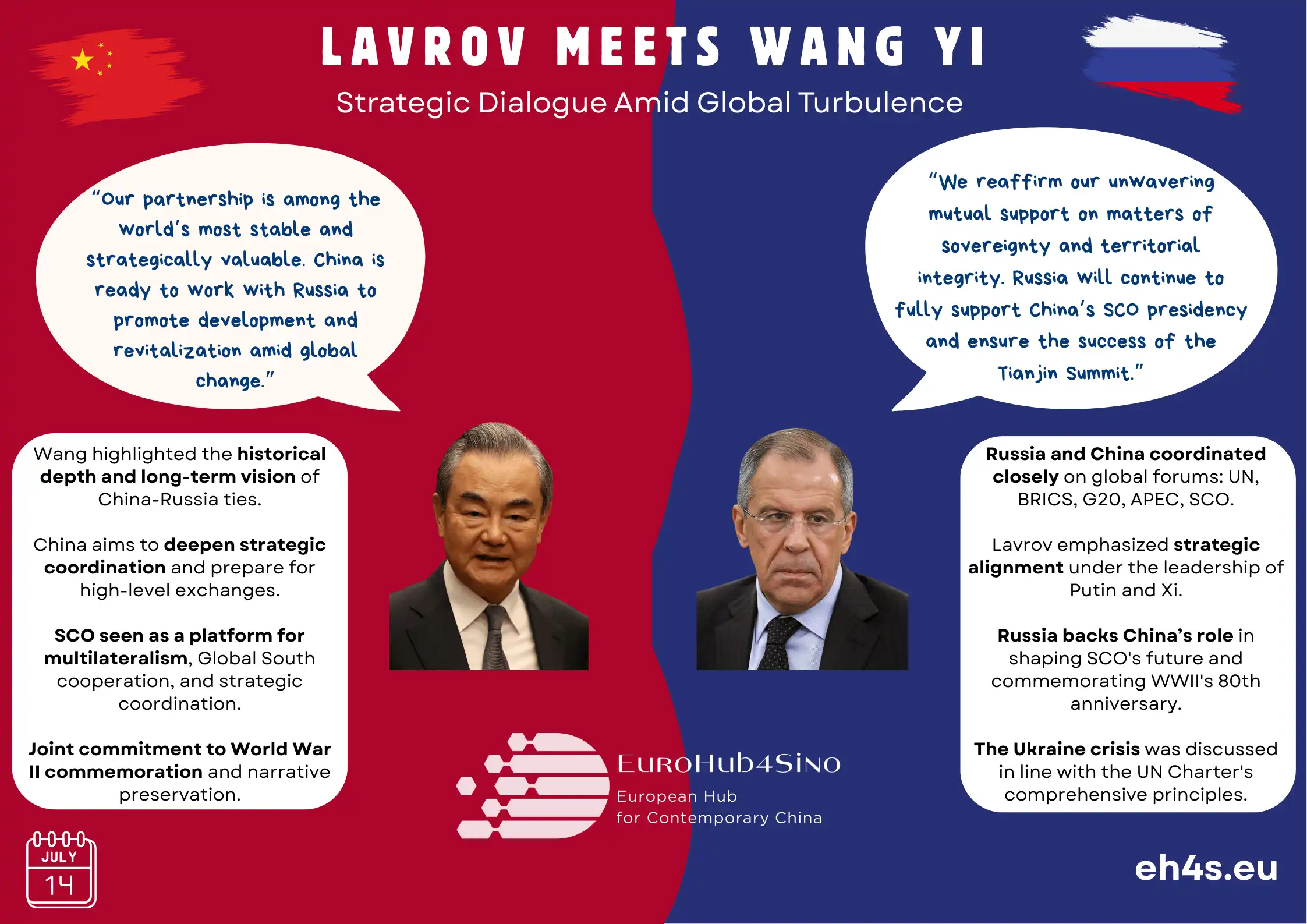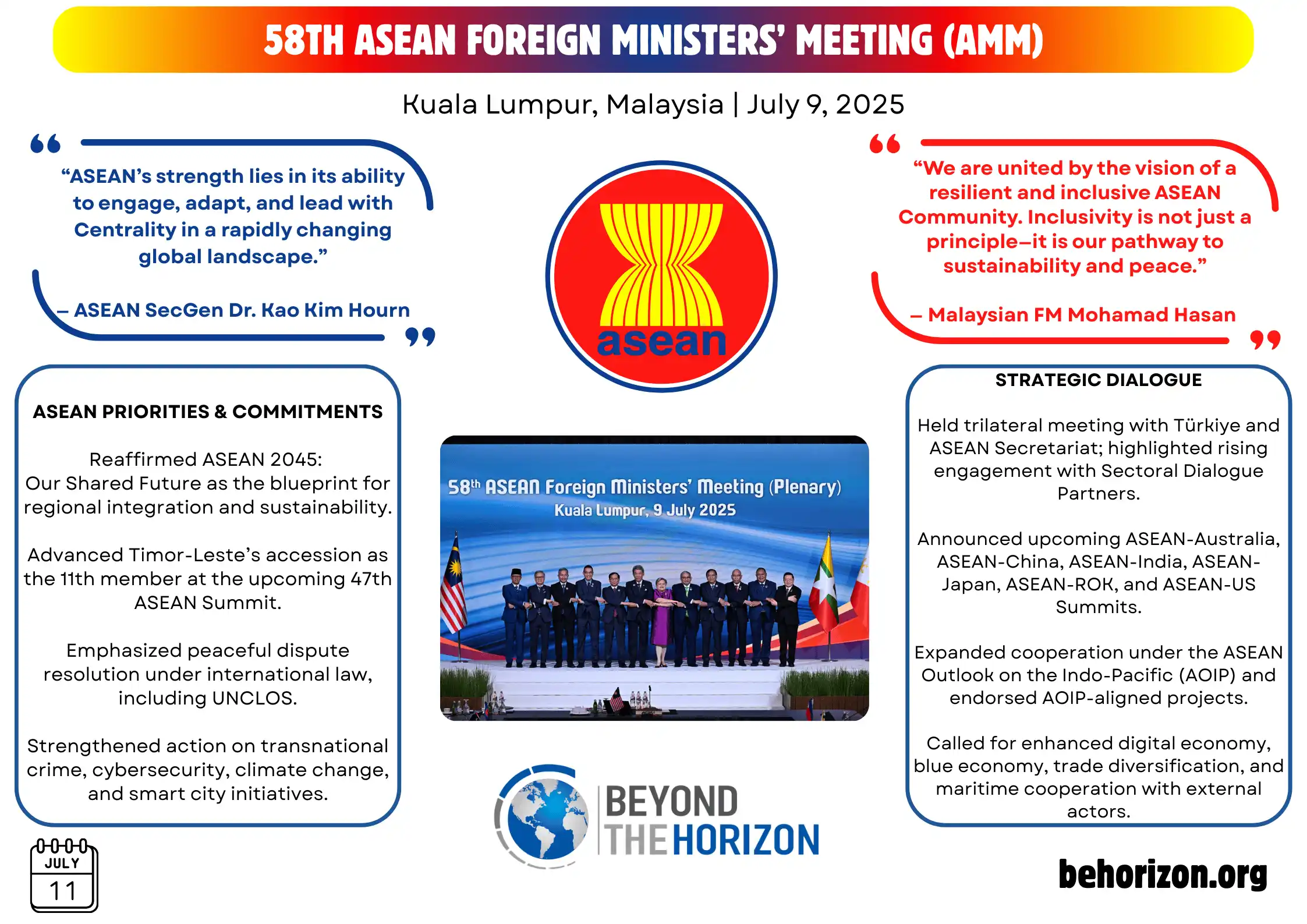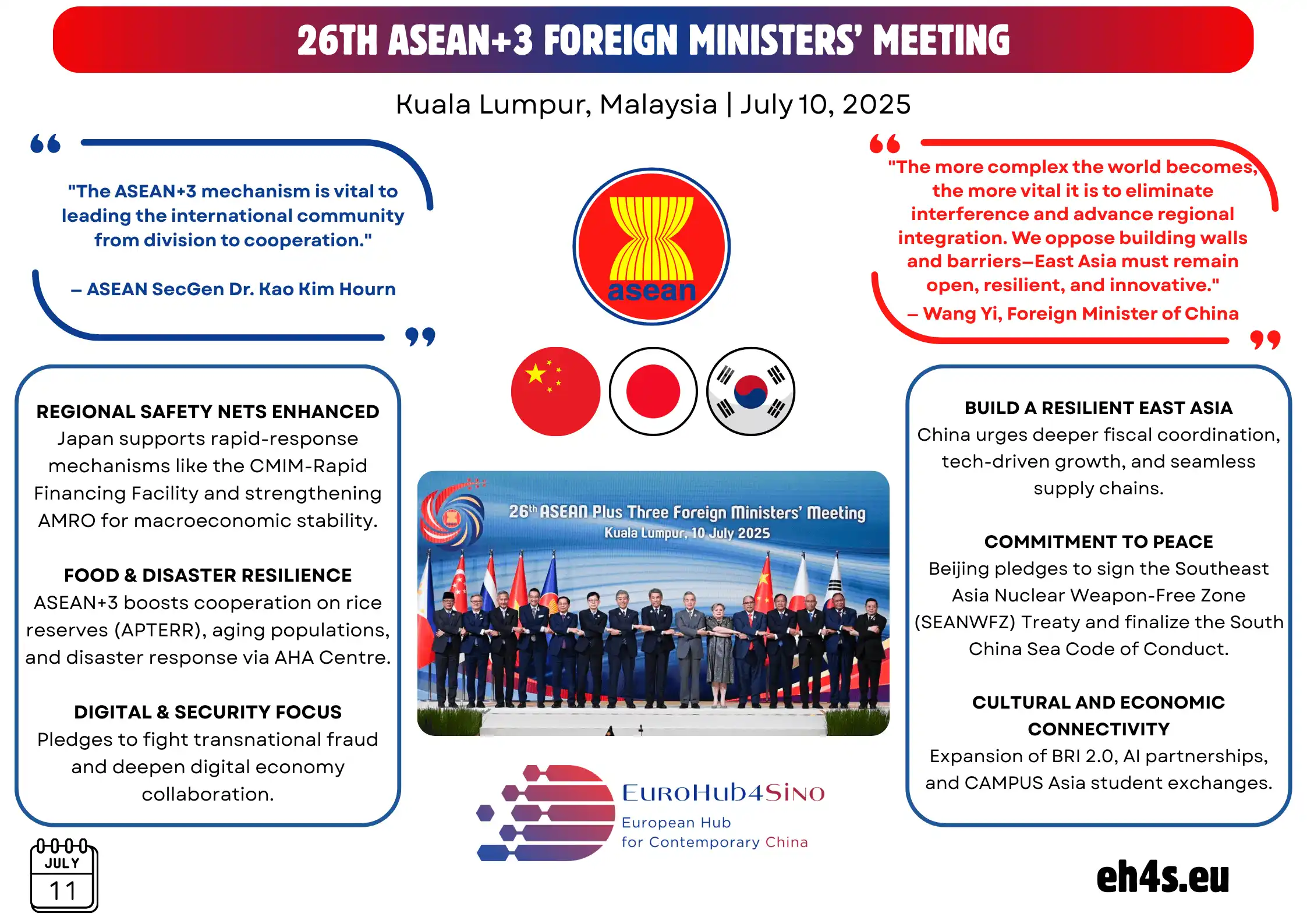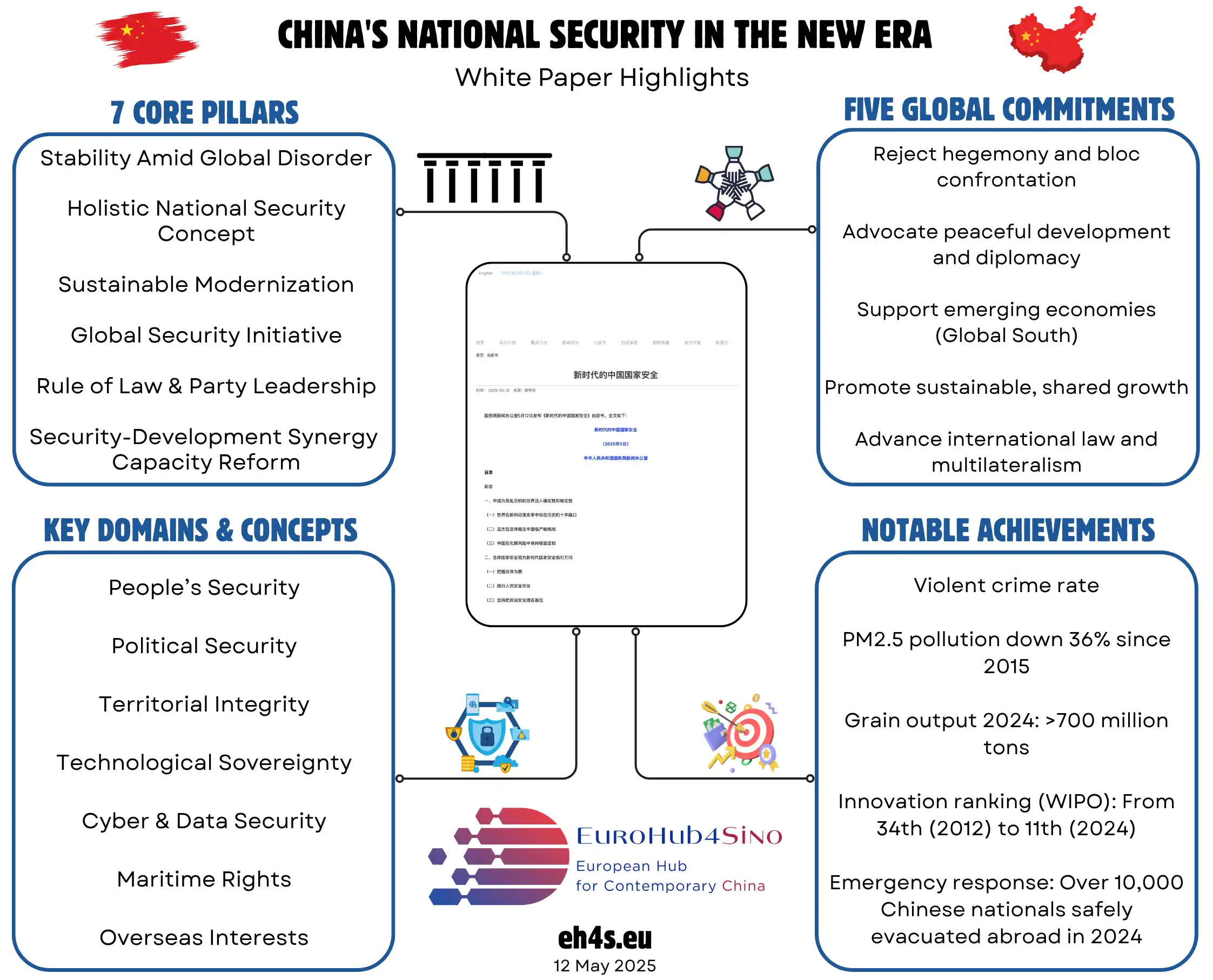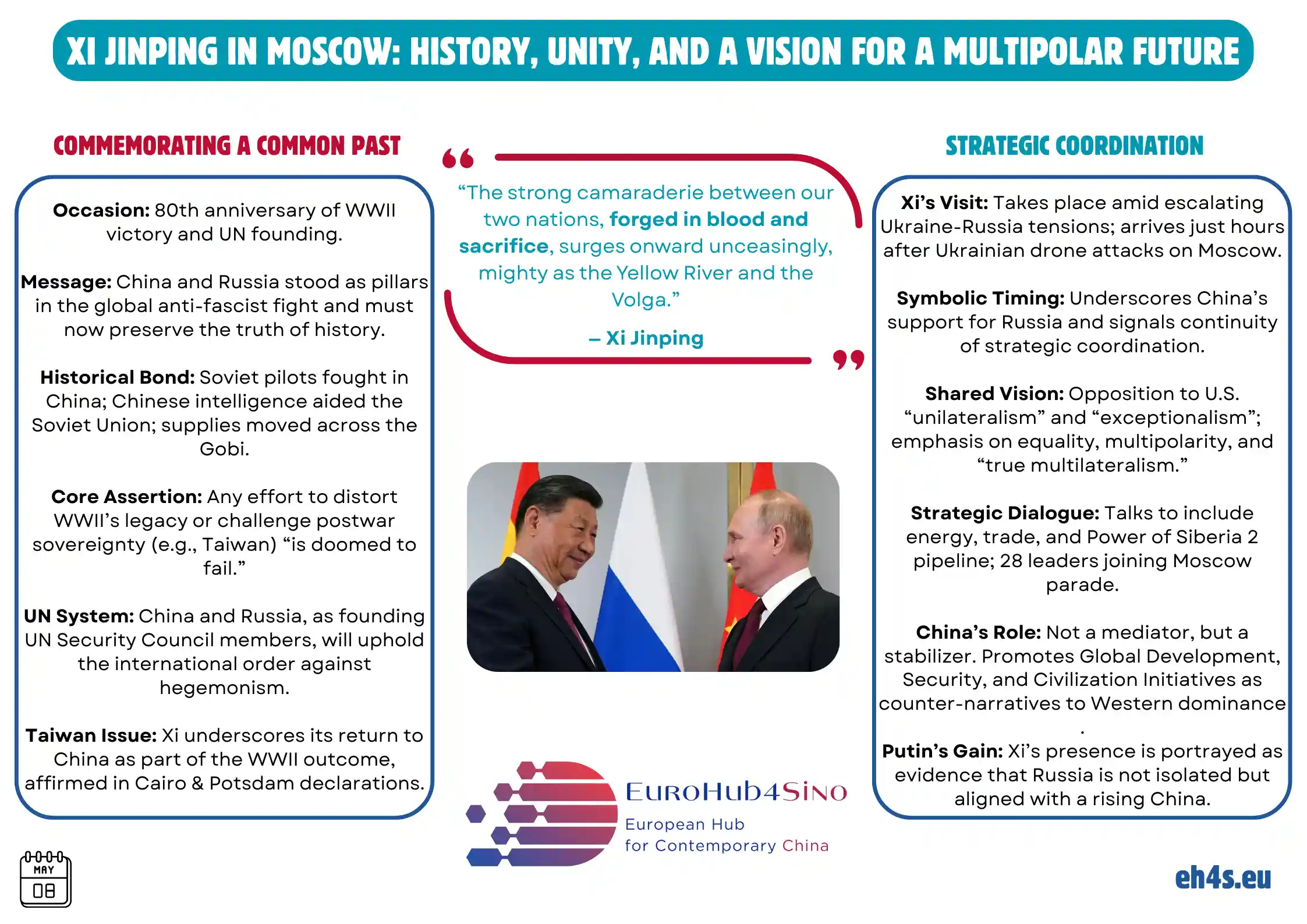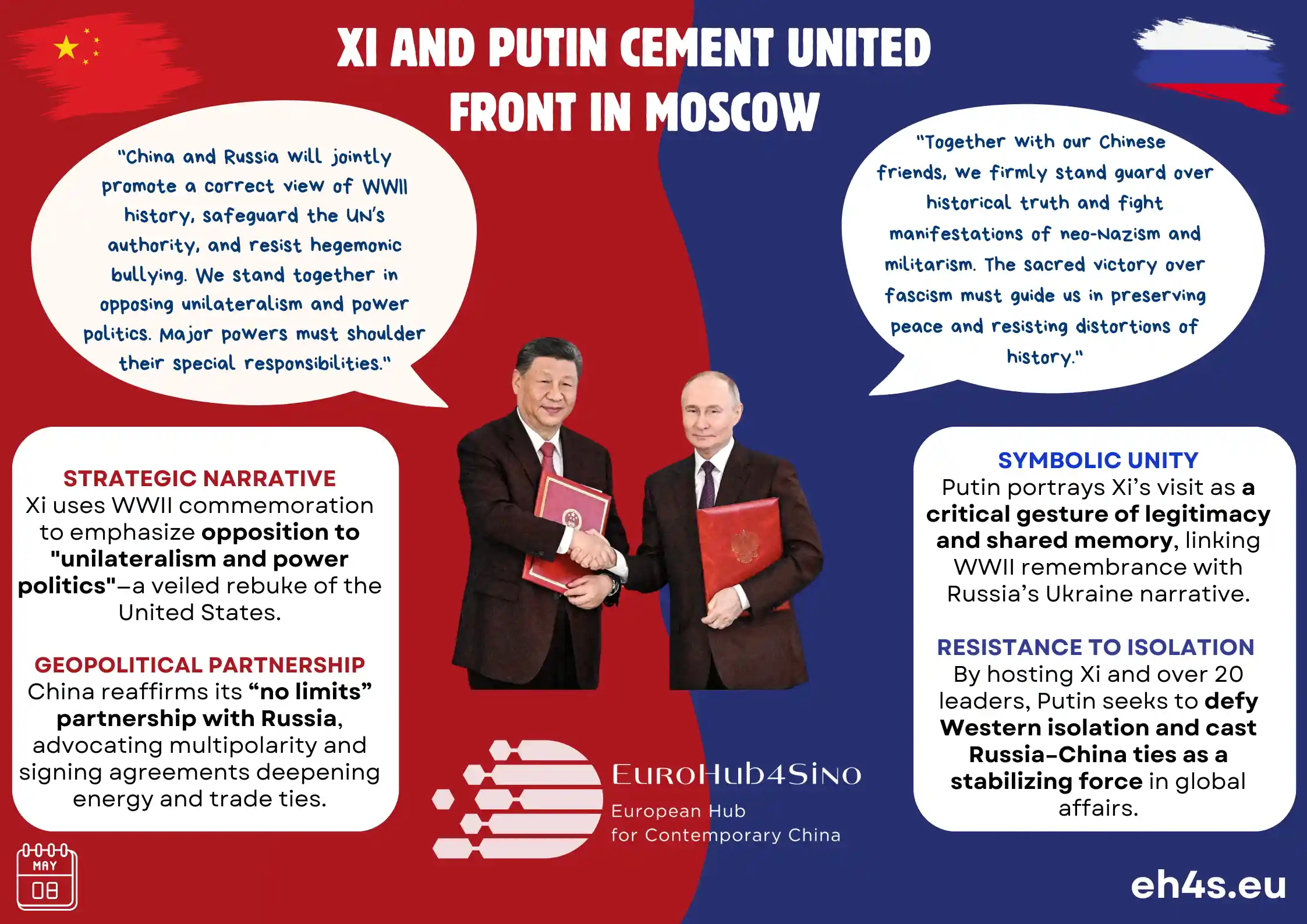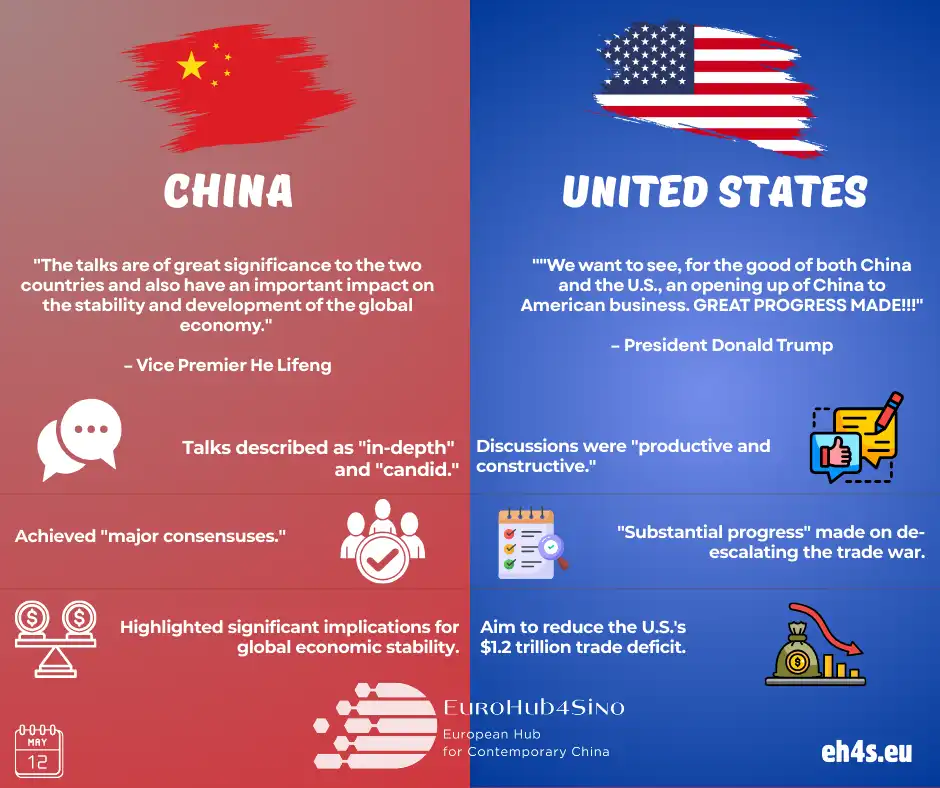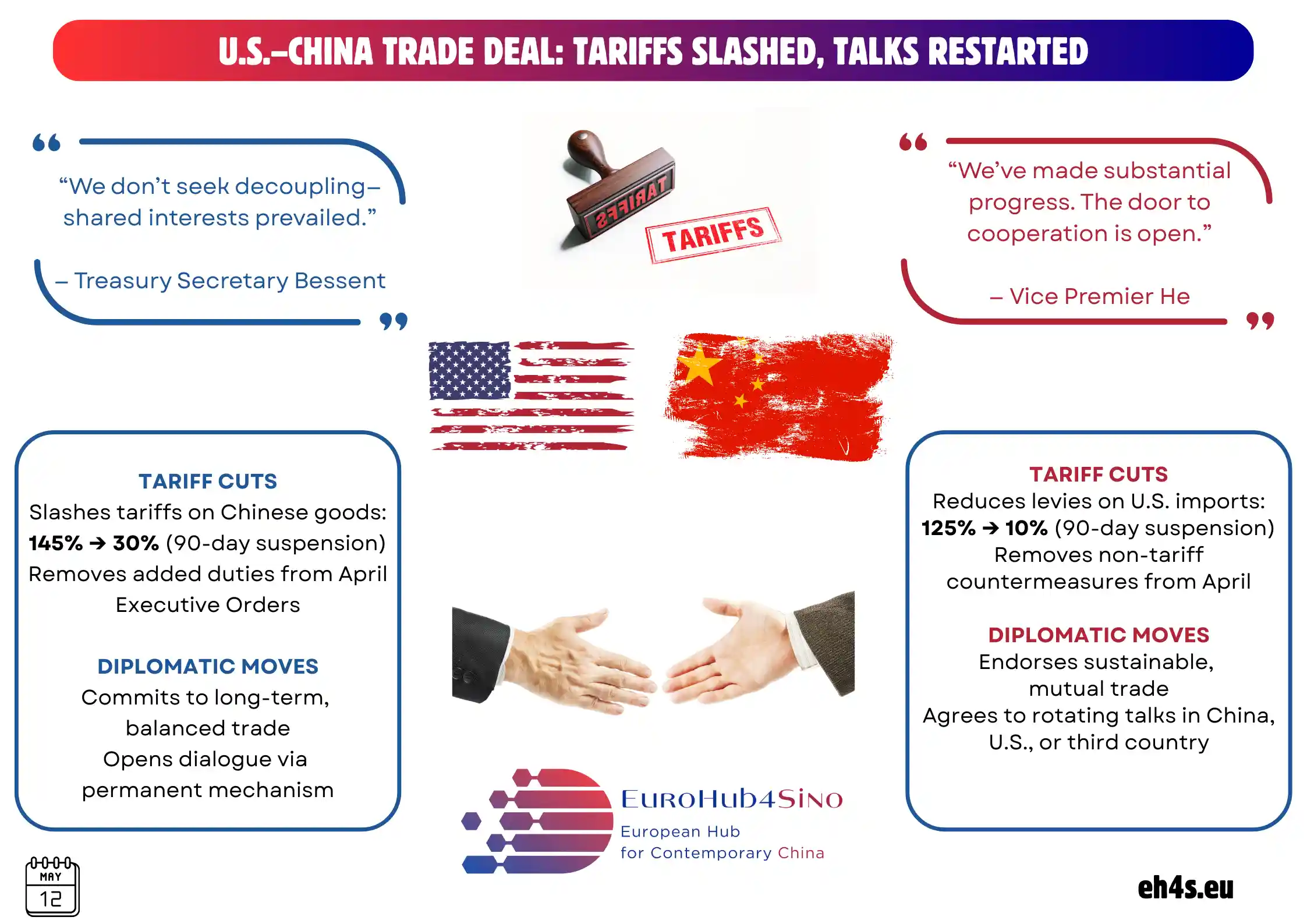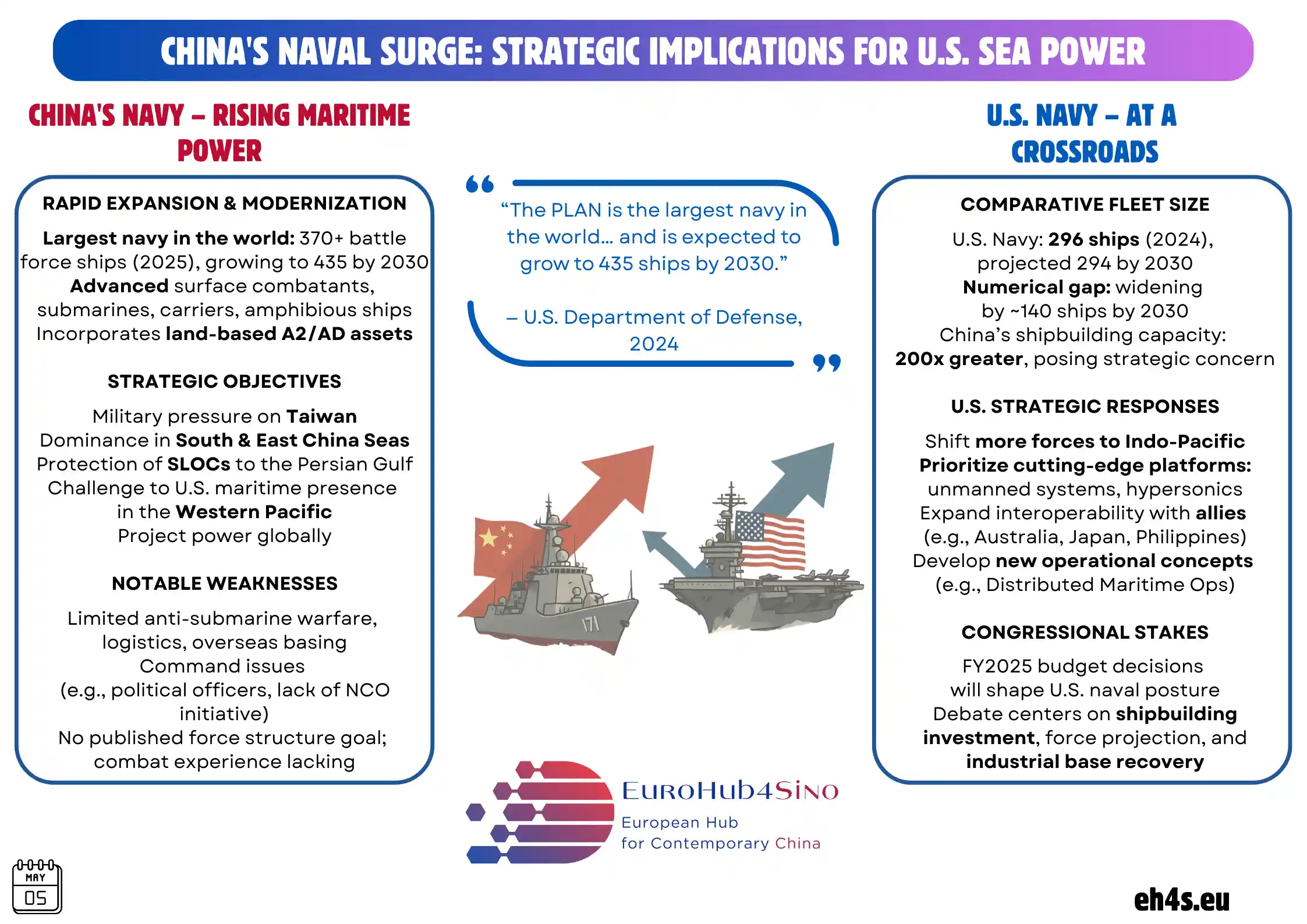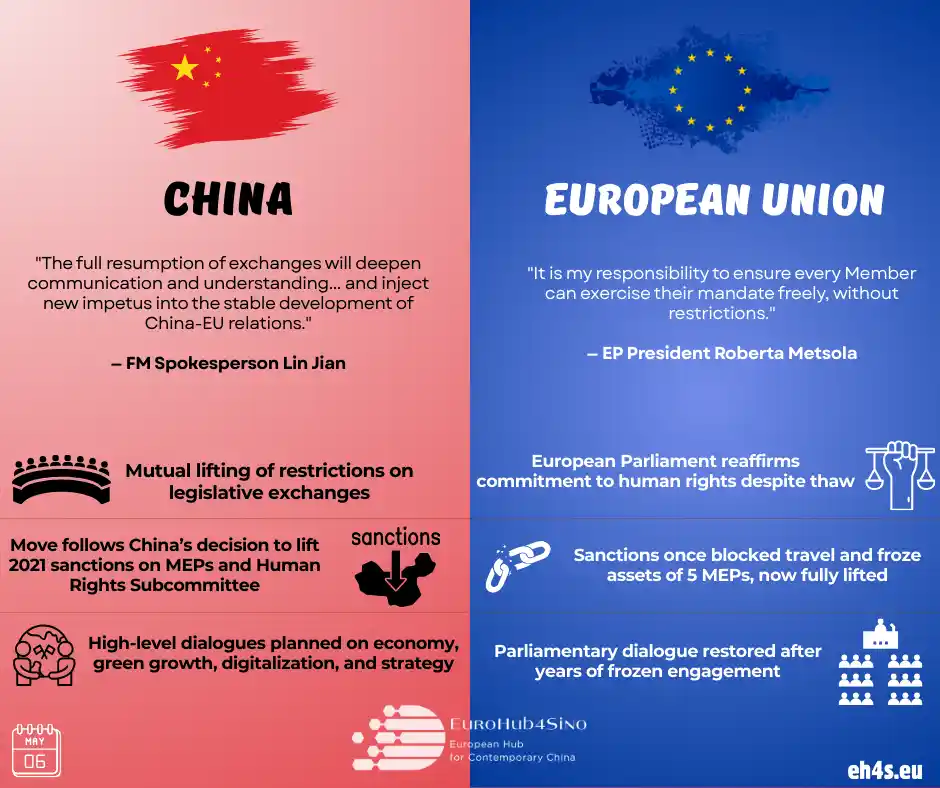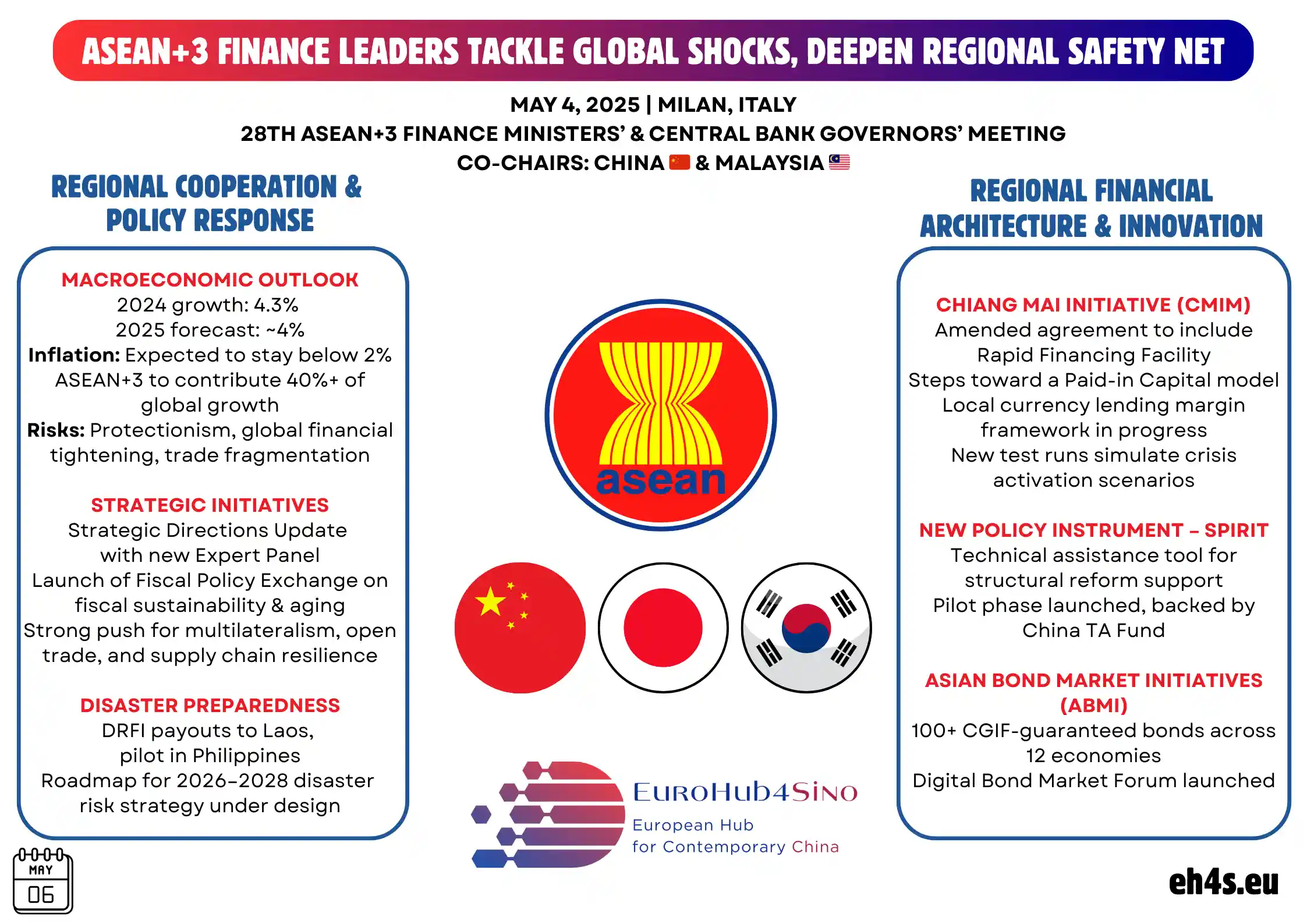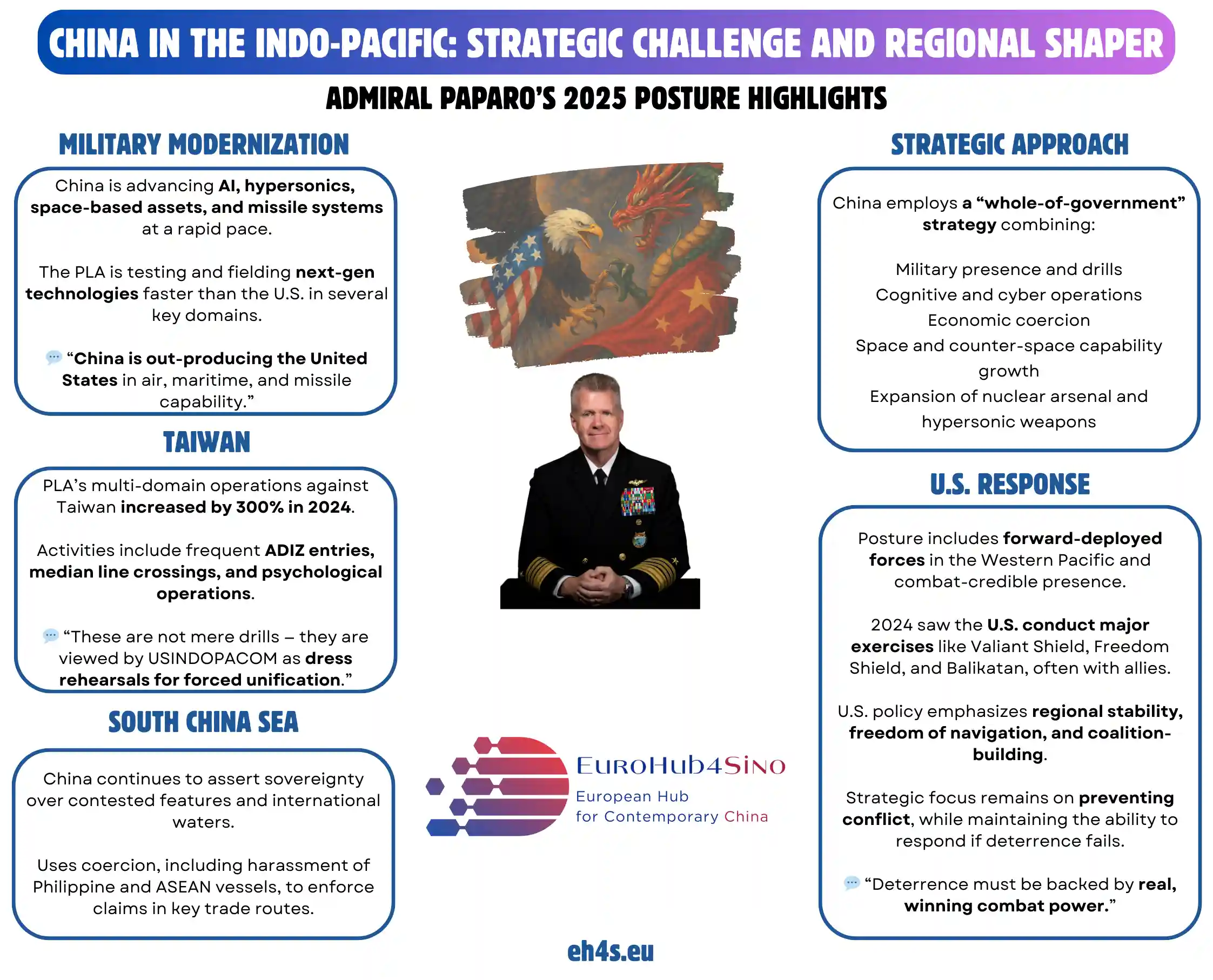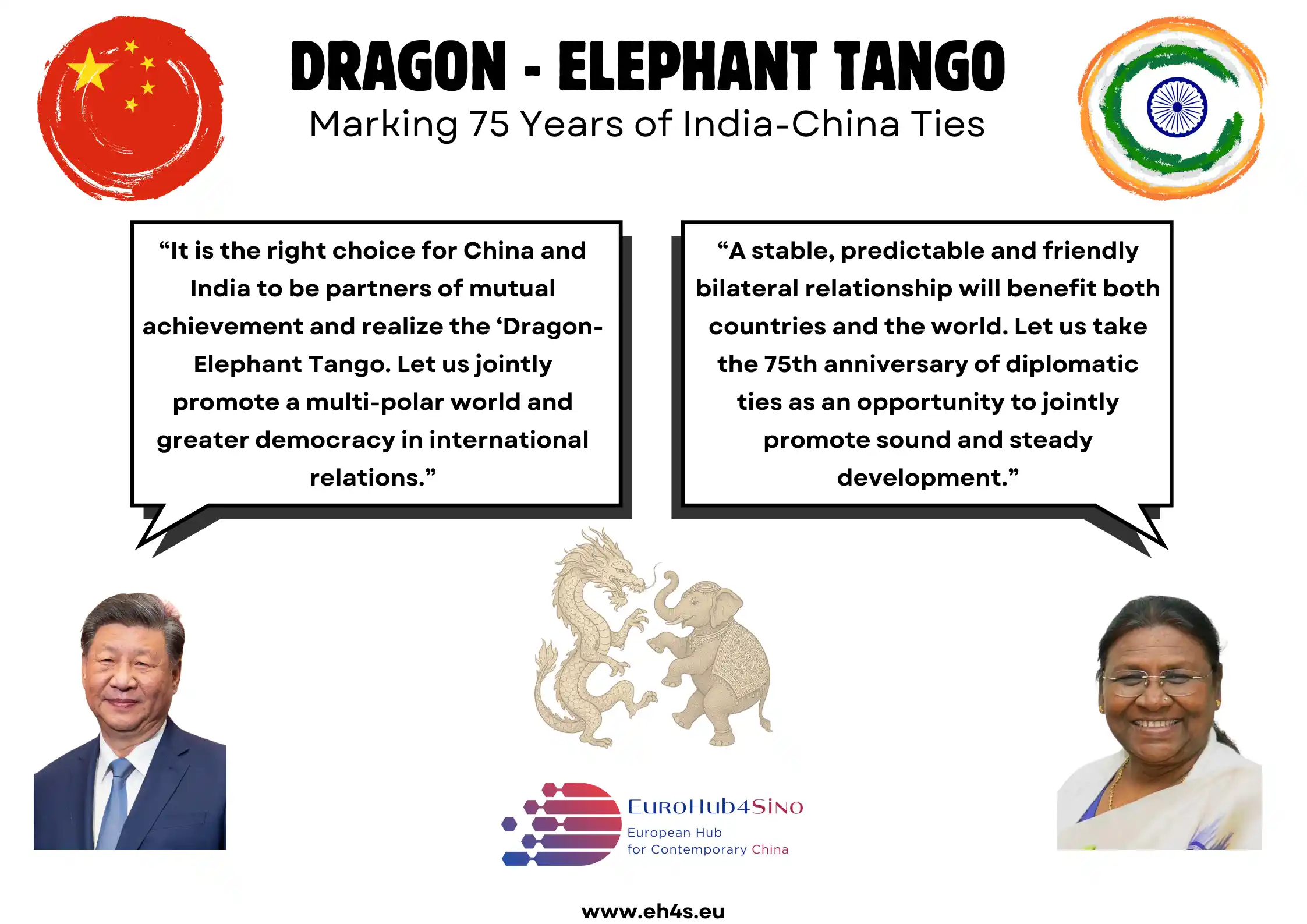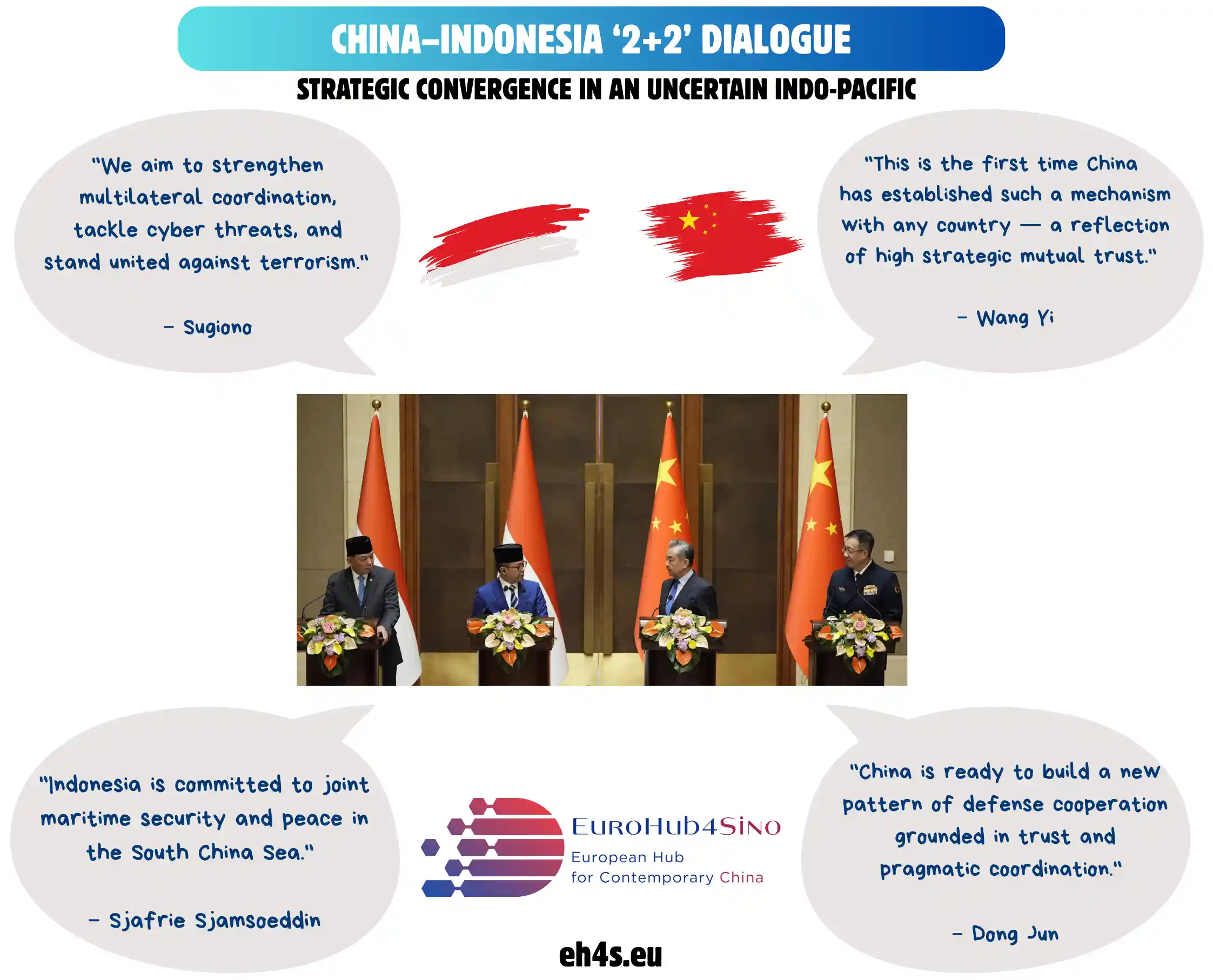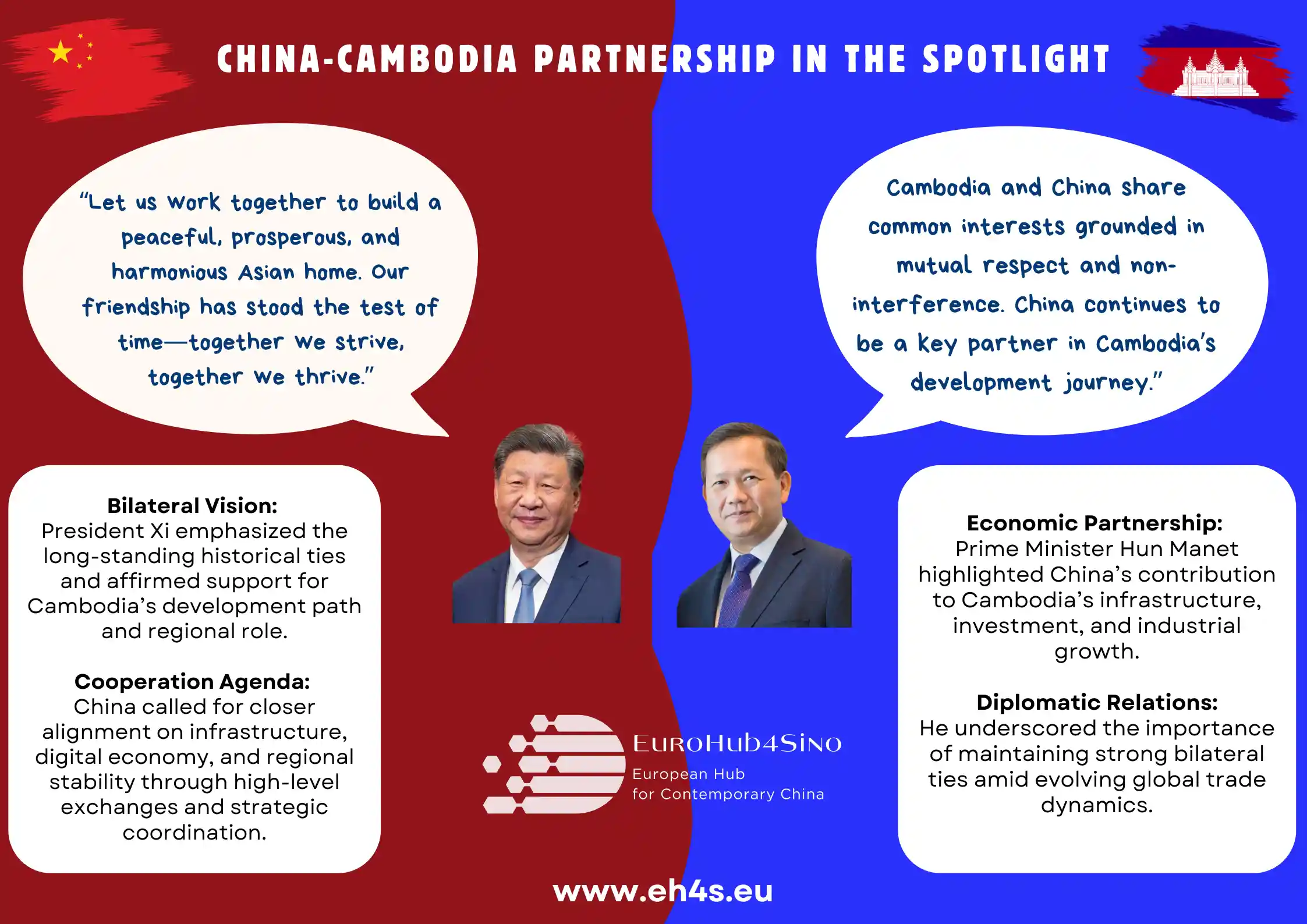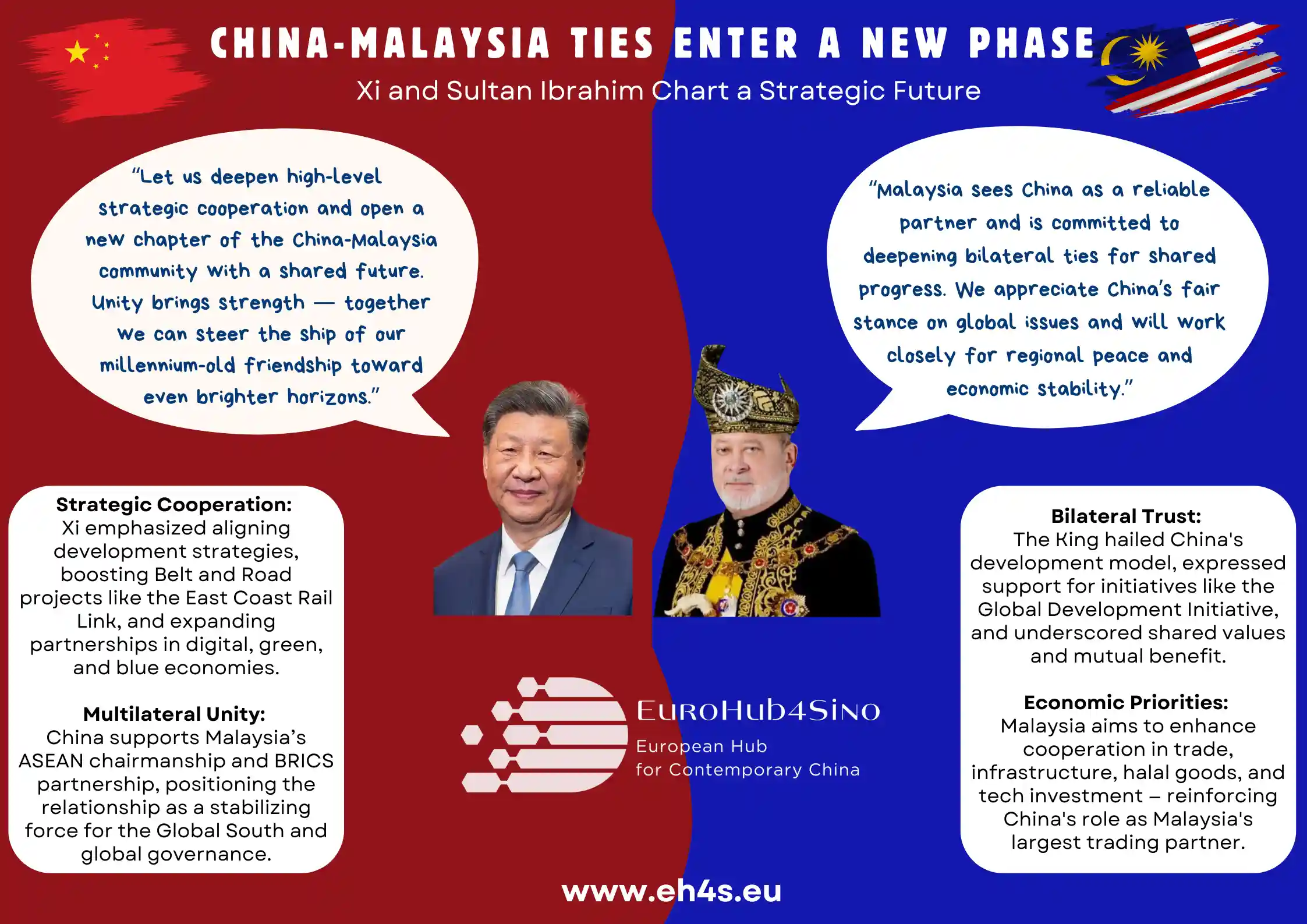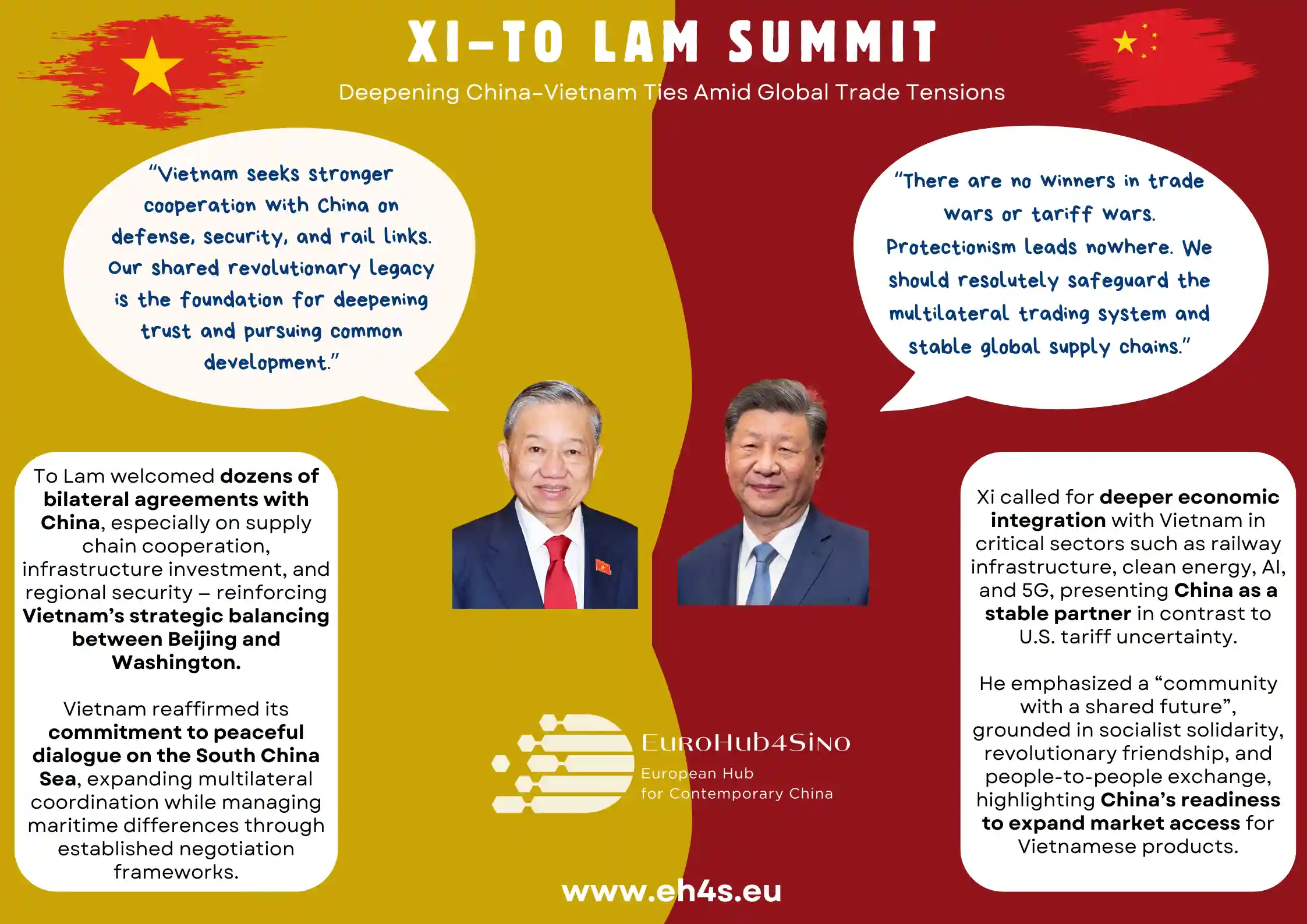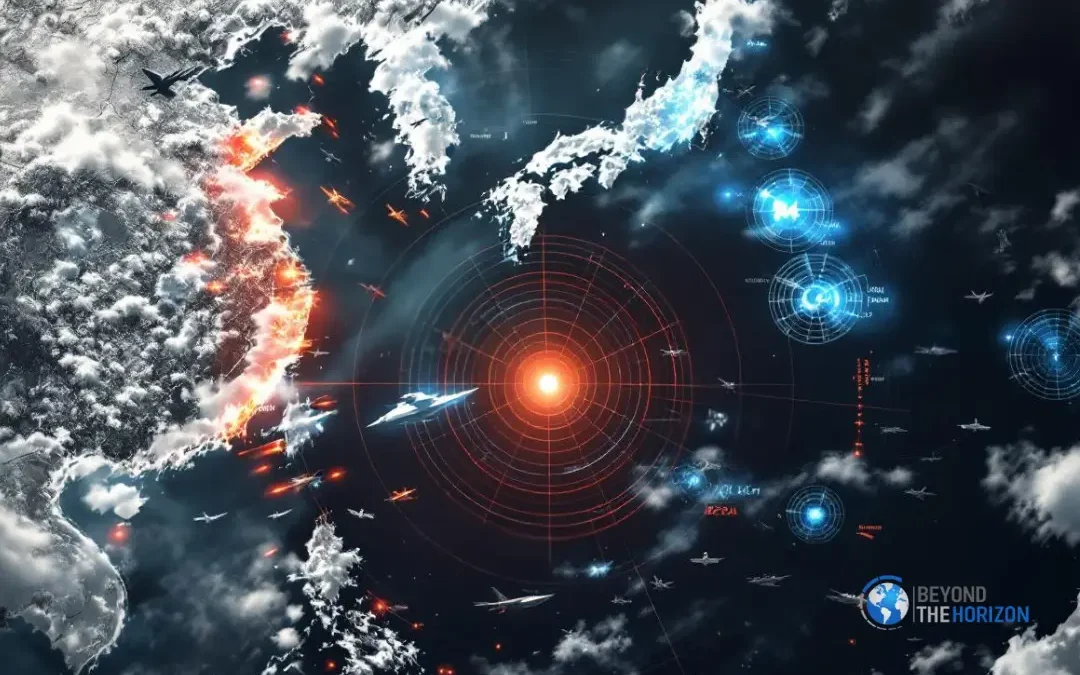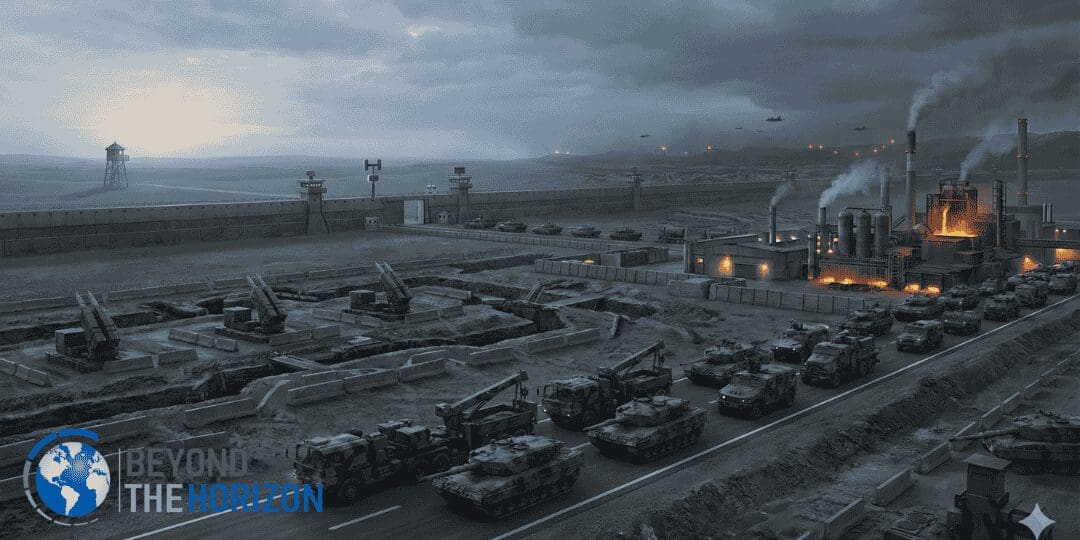Key Takeaways
- Growing Bloc Dynamics: Russia’s strengthened alignment with North Korea signifies a new strategic front in East Asia, directly tying developments on the Korean Peninsula to geopolitical dynamics in Eastern Europe. Pyongyang’s explicit support for Russia’s actions in Ukraine highlights emerging global fault lines.
- U.S. Strategic Clarity Push: The U.S. is actively pressing key allies, notably Japan and Australia, to clarify their military roles in potential Taiwan conflicts. Although both nations currently favor strategic flexibility, coordinated military preparations indicate behind-the-scenes alignment and a readiness to adapt swiftly to contingencies.
- Unprecedented Military Exercises: The U.S.-led Resolute Force Pacific (REFORPAC) exercises illustrate heightened regional military preparedness. The inclusion of realistic scenarios—such as operating under disrupted command networks—signals a shift toward preparing for sustained combat conditions against sophisticated adversaries like China.
- European Indo-Pacific Engagement: The UK’s deployment of HMS Prince of Wales and potential joint carrier exercises with Japan demonstrate increasing European commitment to Indo-Pacific security. This highlights broader global cooperation aimed explicitly at deterring Chinese aggression, reinforcing a trans-regional security architecture.
- Taiwan’s Enhanced Defense Posture: Taiwan’s largest-ever Han Kuang exercises underscore significant shifts in its defense strategy, notably decentralizing military command, bolstering civil-military resilience, and integrating advanced weaponry like HIMARS. These preparations send a strong deterrent message to China about Taiwan’s growing defensive capabilities.
- Japan–Philippines Defense Cooperation: Japan’s initiative to transfer naval destroyers to the Philippines signifies deepening regional security partnerships aimed at countering Chinese maritime expansion. Tokyo’s strategic maneuvering to bypass arms export restrictions underscores the urgency both nations perceive in bolstering deterrence capabilities.
- Risk of Escalation and Miscalculation: While these actions collectively strengthen deterrence, the increased military activities and rapid buildups heighten risks of unintended escalation or miscalculation. Policymakers must prioritize diplomatic and operational mechanisms to manage these risks proactively.
- Time-Sensitive Strategy: Regional actors are rapidly aligning forces and clarifying postures in anticipation of potential conflicts. The urgency of coordinated U.S.-led diplomatic and military strategies is paramount in maintaining stability and preventing escalation toward open conflict.
Introduction
In early July 2025, a series of developments underscored rising geopolitical tensions and accelerating military cooperation across the Indo-Pacific. Key U.S. allies are boosting preparedness amid concerns over a potential conflict involving China – particularly a Taiwan contingency – while adversarial powers strengthen their own alignments. Within the span of days, Russia deepened its “invincible” partnership with North Korea, the United States pressed allies on their commitments in a Taiwan war scenario, and one of the largest multinational military exercises ever in the Pacific commenced. Simultaneously, regional partners stepped up defense activities: Taiwan launched its most extensive war games to date to fortify island-wide resilience, Japan moved toward arming the Philippines with naval destroyers in the face of Chinese maritime assertiveness, and the United Kingdom dispatched a carrier strike group to East Asian waters for the first time since 2021. These coordinated actions by U.S. allies and partners are intended to reinforce deterrence and signal unity, even as Beijing and its partners dismiss them as provocations or “mere bluffs”. This brief analyzes each of these developments and their implications for Indo-Pacific security.
North Korea-Russia “Invincible” Alliance Deepens
Russian Foreign Minister Sergei Lavrov’s visit to North Korea from July 11–13, 2025 marked a high-water mark in Pyongyang-Moscow ties, cementing a growing strategic alignment. Lavrov met with North Korean leader Kim Jong Un in the coastal city of Wonsan, where he praised the two nations’ relations as an “invincible fighting brotherhood”. The high-level talks built on a mutual defense treaty signed in 2024 and followed Russian President Vladimir Putin’s own visit to North Korea last year. According to North Korean state media, Kim Jong Un pledged “unconditional support” for “all measures” taken by Russia’s leadership to address the “Ukrainian crisis,” effectively backing Moscow’s war in Ukraine without reservation. Lavrov, in turn, thanked North Korea for the concrete assistance it has already provided – notably the deployment of thousands of North Korean troops and large quantities of munitions to aid Russia’s military campaigns. South Korean intelligence estimates that Pyongyang has supplied approximately 12 million artillery shells to Russia so far, and North Korea has even agreed to send 6,000 military engineers and laborers to support reconstruction in Russia’s Kursk region, which saw heavy fighting.
These moves underscore how the Ukraine war has catalyzed a de facto alliance between Russia and North Korea, with reciprocal security guarantees. Lavrov’s visit – only days before he headed to China for a Shanghai Cooperation Organisation meeting – also highlights an emerging bloc of Moscow, Pyongyang (and arguably Beijing) coordinating more closely against Western and allied interests. The new Russia–North Korea defense pact elevates the risk that tensions in one theater (e.g. Europe) could spill over into provocations in another (East Asia), and vice versa. Indeed, South Korean officials warn that North Korea may be preparing to deploy even more troops to assist Russialater in the summer. For Pyongyang, staking “invincible” brotherhood with Moscow not only shores up an important patron against international isolation, but could also secure advanced weapons or energy assistance from Russia down the line. For the U.S. and its allies in Asia, this growing axis of sanctioned states presents a more complex challenge, potentially tying the Korean Peninsula and Ukraine fronts together.
U.S. Allies Pressed on Taiwan Contingency Plans
Amid China’s military pressure on Taiwan, Washington has started urging its closest allies in the region to clarify how they would respond if a war erupted over the island. According to a July 12 Financial Times report, the Pentagon – led by U.S. Under Secretary of Defense for Policy Elbridge Colby – pressed Japan and Australia in recent talks to spell out their roles in any U.S.-China conflict over Taiwan. This unusual request for upfront commitments reportedly caught Tokyo and Canberra off guard, not least because the United States itself maintains “strategic ambiguity” and offers no formal defense guarantee to Taiwan. The U.S. appeal reflects growing concern in Washington that deterrence in the Taiwan Strait could fail unless allies are prepared to act jointly from the outset of a conflict. Colby – an architect of the 2018 U.S. defense strategy – has argued for shifting focus to great-power competition with China and urging allies to boost defense efforts as part of an “America First” approach to “peace through strength”.
Allied responses to these feelers have been cautious. Australia’s government made clear it will not pre-commit troops in advance to any conflict, emphasizing that any decision to join a war will be made by “the government of the day” based on Australian sovereignty. “We don’t discuss hypotheticals,” Australia’s Defence Industry Minister Pat Conroy said in an interview, implicitly rebuffing the Pentagon’s query. Japan – which hosts U.S. forces and would be on the frontline of any Taiwan contingency – was similarly uneasy about being pressed for plans without a U.S. security guarantee for Taiwan. Japanese officials have not publicly detailed their stance, but the question highlights a delicate issue: while Japan’s 2023 defense strategy calls Taiwan’s security vital to its own, committing to combat operations would be domestically and diplomatically fraught. Both allies appear to prefer strategic flexibility, even as they step up military readiness with the U.S. behind the scenes. Notably, in late July, Australia is hosting Exercise Talisman Sabre – its largest-ever war games with the U.S. – involving 13 nations and aimed partly at Taiwan scenario training. In short, the United States is seeking firmer allied resolve on Taiwan, but for now Japan and Australia are signaling that any decision to fight will depend on circumstances at the time, not blank-check pledges. This gentle push-and-pull is likely to continue, as all three countries quietly refine joint contingency plans.
Largest Pacific Air Exercise Showcases Allied Readiness
Underscoring this focus on preparedness, the U.S. and its Indo-Pacific allies have launched the largest air power exercise ever seen in the region. On July 10, Pacific Air Forces (PACAF) kicked off Resolute Force Pacific 2025 (REFORPAC), a month-long contingency-response exercise spanning Hawaii, Guam, Japan, and other locations. Billed as the U.S. Air Force’s biggest Pacific exercise in decades, REFORPAC involves over 300 aircraft and more than 12,000 military personnel from the U.S. and several partner nations. The drills are designed to demonstrate PACAF’s ability to “generate, sustain and adapt airpower in a contested environment” while working jointly with allies. In practice, this means training to rapidly disperse forces across austere airstrips, keep jets flying under missile attack, perform quick rearming and refueling (“hot-pit” operations), execute combat search-and-rescue, and maintain logistics if traditional bases and networks are cut off. “We must be ready to operate in austere conditions, with degraded networks, and through disruptions to sustainment chains,” said Gen. Kevin Schneider, PACAF Commander, emphasizing that success may hinge on generating sorties while under attack and far from main bases. The exercise’s realism is notable – “in ways we haven’t done in decades, according to Schneider– effectively practicing the wartime scenarios that a conflict in the Western Pacific might present.
Several allies are actively participating. The U.S. 35th Fighter Wing at Misawa, Japan was augmented with squadrons from multiple countries to form a provisional 35th Air Expeditionary Wing, leading high-tempo operations from one of the northernmost Allied airfields. Airmen from Japan, Australia and other partner air forces are integrated into command-and-control cells and mixed flight groups, honing interoperability. “This wing is all-in, showing what contingency readiness looks like in the Pacific,” said Col. Paul Davidson of the 35th Wing, as crews practiced distributed missions and quick re-deployment alongside Japanese counterparts. These efforts directly support REFORPAC’s focus on fighting under degraded conditions, moving and shooting even when under fire or when infrastructure is damaged. The exercise also dovetails with a broader U.S. Department of the Air Force “Department-Level Exercise” series, the first of its kind in a generation, spanning multiple theaters with over 350 coalition aircraft. By stress-testing Pacific air operations at unprecedented scale, REFORPAC sends a deterrent message: the U.S. and its allies are honing the ability to quickly mass airpower and sustain combat operations across the Indo-Pacific, even against a sophisticated adversary. This show of unity and capability is aimed squarely at China’s military planners, who in recent years have built up forces to target U.S. bases and carriers.
UK Carrier Strike Group Augments Indo-Pacific Presence
European allies are also expanding their security role in Asia. In a significant demonstration of trans-regional commitment, the United Kingdom’s Carrier Strike Group 25 – led by HMS Prince of Wales – has deployed to the Indo-Pacific and is scheduled to make the first-ever port visit to Japan by that vessel in late August 2025. This will be the second visit by a Royal Navy aircraft carrier to Japan (the first being HMS Queen Elizabeth in 2021), reflecting London’s intent to regularize its presence in support of a “free and open Indo-Pacific.” Tokyo officially welcomed the planned port call as proof of the UK’s commitment to regional peace and stability amid an “increasingly severe and uncertain” security environment around Japan. Japanese defense officials said the visit will “contribute to further strengthening” the Japan–UK security partnership, which has grown closer through agreements like a Reciprocal Access Agreement (signed in 2023) and the Quad partnership.
Notably, discussions are underway about conducting cross-deck exercises between the UK carrier and Japan’s own quasi-carriers. HMS Prince of Wales carries F-35B Lightning II stealth fighters, and if during its visit these British jets land on and take off from the deck of JS Kaga – a newly converted Japanese carrier (formerly a helicopter destroyer) – it would mark an unprecedented interoperability feat. No British F-35 has ever operated from a Japanese carrier; doing so would send “an extremely powerful message” to potential adversaries, especially China, about the unity and advanced capabilities of Japan and the UK. Japan’s Navy Chief of Staff, Adm. Saito Akira, noted that such joint training would allow Japan to absorb valuable know-how from the Royal Navy, which has decades of carrier-operating experience. While final decisions on cross-deck drills are pending, neither side has ruled it out.
British officials have been explicit that the deployment – an eight-month mission codenamed Operation Highmast – is about bolstering cooperation with allies like Japan and Australia as a deterrent signal to China. Commodore James Blackmore, commander of the UK strike group, said he looks forward to having Japanese Maritime Self-Defense Force personnel embark on Prince of Wales and training together at sea. The strike group’s voyage, which includes exercises with the U.S. and visits to other regional partners (such as Singapore and South Korea), underscores a broader trend: NATO allies “going Indo-Pacific.” In effect, the UK is supporting U.S.-led security architecture in Asia, demonstrating that China’s assertiveness is drawing in not just local states but also global powers. For Japan, which regards the UK as a “quasi-ally,” this visit deepens bilateral ties and shows that it can count on European partners’ naval power in a crisis. Beijing, for its part, has criticized extra-regional military deployments as destabilizing; nonetheless, the impending Japan–UK carrier drills highlight an expanding multilateral coalition aimed at maintaining a balance of power in East Asia.
Taiwan’s Largest-Ever Han Kuang War Games
On July 9, Taiwan launched its 39th annual Han Kuang exercises, and this year’s edition is the most extensive and realistic test of Taiwan’s defenses in the island’s history. These 10-day war games mobilize 22,000 reservists– the highest number ever – and, for the first time, incorporate new weapons like U.S.-supplied HIMARS rocket artillery and domestically-produced Sky Sword II air-defense missiles. The drills opened with unprecedented simulated attacks on Taiwan’s military command and critical infrastructure, reflecting an assumption that in a Chinese invasion scenario, PLA forces would try to decapitate communications and control early. In response, Taiwan’s military is practicing decentralized command: units are training to fight on with disrupted comms, and commanders at all levels are being challenged to innovate solutions if cut off from the top.
As the exercise progresses, it will expand into full-scale joint operations simulating an attempted PLA invasion or blockade. Taiwan’s Army, Navy, and Air Force are conducting round-the-clock live-fire drills to defend beaches and airspace. Civil defense is also integrated: authorities are testing emergency supply stations and freshly expanded air-raid shelter networks across cities, a “whole-of-society” approach to improve resilience. These measures acknowledge that a cross-strait war would impact the civilian population directly, as seen in Ukraine. President Lai Ching-te has urged citizens to take preparedness seriously, framing Taiwan’s will to fight as critical to deterring Beijing’s aggression.
Beijing’s response to Han Kuang has been predictably sharp. China’s Defense Ministry dismissed Taiwan’s war games as “nothing but a bluff,” stating that no amount of weapons could enable the island to withstand the PLA’s “sharp sword”. China also announced bans on exports of certain dual-use goods to Taiwanese firms in an apparent economic retaliation. Despite Beijing’s rhetoric, regional observers and military attachés are closely watching Han Kuang to gauge improvements in Taiwan’s readiness and the PLA’s reactions. While the exercises are still largely a national effort, the presence of U.S. advisers and the public U.S. support for Taiwan’s training indicate a growing international dimension to Taiwan’s defense. The lessons Taiwan learns from these war games will likely inform future U.S.-Taiwan security assistance and cooperative planning in the face of intensifying Chinese military pressure.
Japan-Philippines Security Cooperation Expands
Japan is accelerating efforts to bolster the defenses of Southeast Asian partners, most notably the Philippines, as a counterweight to China’s maritime assertiveness. In a move with historic significance, Tokyo is preparing to transfer up to six retired warships to the Philippine Navy – the first major export of Japanese combat vessels in the modern era. Japan will provide six Abukuma-class destroyer escorts (small destroyers) that have served in Japan’s Maritime Self-Defense Force for over 30 years. The plan is intended to strengthen the Philippines’ deterrence against Chinese expansionism in regional waters. For context, the Philippine Navy currently has no destroyers at all; it fields only frigates and corvettes, which are smaller and more lightly armed. The aging Abukuma-class ships (about 2,000 tons displacement) each require ~120 crew and are equipped with anti-ship missiles, torpedoes, and guns – a substantial boost in capability for Manila. If acquired, these vessels would fill a critical gap in the Philippines’ ability to patrol and defend its extensive maritime domain in the South China Sea, where it faces constant incursions by Chinese coast guard and militia ships.
The transfer is not yet finalized; an inspection team of Philippine naval experts is scheduled to visit Japan over the summer to assess the condition of the decommissioned ships. Indeed, this prospective deal comes on the heels of rapidly expanding Tokyo–Manila defense ties. In February 2023, Japan and the Philippines signed a Reciprocal Access Agreement (RAA) – Japan’s first such defense pact with any Southeast Asian country – to facilitate joint exercises and military logistics on each other’s soil. Since then, cooperation has accelerated: Japan has donated coastal radar systems to the Philippines and increased joint maritime drills, and the two sides held high-level “2+2” strategic dialogues to coordinate security policy. Both U.S. allies frame their partnership as a response to shared challenges from China – be it Chinese naval activities near Philippine-claimed reefs in the South China Sea or around Japan’s Senkaku/Diaoyu Islands in the East China Sea.
Conclusion and Policy Implications
These concurrent developments in July 2025 paint a picture of an Indo-Pacific region in flux, with clear action–reaction dynamics between two camps. On one side, the United States and its allies/partners are forging a tighter defensive coalition: coordinating plans for worst-case scenarios (like a Taiwan war), practicing large-scale joint operations through exercises such as REFORPAC, and expanding security assistance to vulnerable states from East Asia to the Pacific Islands. The active involvement of non-Pacific actors like the UK underscores that managing China’s rise is now a global priority, not just a regional one. On the other side, China (and its partners Russia and North Korea) perceive these measures as encirclement or provocation, and are responding with military posturing and intensified collaboration of their own – from Chinese fighter jets probing Taiwan’s airspace to Russia openly arming North Korea in violation of UN sanctions. The risk is a reinforcing cycle of military preparations.
For policymakers, a key takeaway is the importance of clear communication and calibrated signaling. U.S. requests for allied clarity on Taiwan, while aimed at strengthening deterrence, must be handled delicately to avoid creating rifts or emboldening Beijing’s aggression if it perceives hesitation. Simultaneously, allied exercises and deployments should continue to emphasize transparency and defensive intent, to counter Chinese narratives of encirclement. The developments also highlight the need to boost multilateral security frameworks: initiatives like Japan–Philippines and Japan–UK cooperation complement existing alliances and can complicate an adversary’s calculus. However, with greater military activity in close proximity, the chance of accidents or miscalculation grows – whether a near miss between jets over the Taiwan Strait or a misinterpreted missile test. Confidence-building measures (like hotlines or codes of conduct at sea) are increasingly urgent to manage the heightened tempo of operations.
Finally, the flurry of activity in July 2025 shows that time is of the essence. Allies are racing to prepare, and adversaries are striving to negate those preparations. Continued U.S. leadership – coordinating allies’ roles, expediting defense aid (e.g. to Taiwan and the Philippines), and keeping diplomatic channels open with Beijing – will be vital in steering the Indo-Pacific toward a balance that favors stability over conflict. Each of these developments, from war games to arms transfers, is a piece of a larger strategic puzzle. Fitting them together now will determine whether the region heads toward a strengthened deterrence and uneasy peace, or a dangerous spiral of escalation.
Related Infographics
